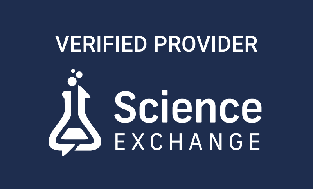Antibody drug conjugates (ADCs) are targeted therapies that consist of a monoclonal antibody (mAb) linked to a chemotherapeutic via a linker. The mAb binds to a target receptor antigen on tumor cells and the ADC complex is internalized into tumor cells resulting in the release of a chemotherapeutic drug that kills tumor cells. The main advantages of developing an ADC are low off target effects and an expanded therapeutic index of the chemotherapy resulting in more effective tumor killing. The concept of using a mAb to deliver a cytotoxic payload to tumor cells is not new but early attempts to develop clinically effective ADCs were unsuccessful due to a few reasons such as poor linkage resulting in separation of the payload, off-target toxicity due to nonspecific antibody binding, immune responses resulting in rapid clearance and low residency time etc1. Additionally, ADCs can be developed against specific membrane bound receptors that have an antigenic extracellular domain that does not get released or shed into the extracellular environment or vasculature1. ADC targets are typically overexpressed in tumor cells compared to normal cells so the continued discovery of differentially expressed biomarkers will help the development of novel ADCs. Currently, most ADCs target receptors or ion channels that are difficult antigen targets, but improvements in antibody discovery methods have helped improve the quality of therapeutics antibodies used in ADCs.
Another critical element of developing an ADC is the linker technology. Using a weak or incorrect linker could result in early release of the payload causing systemic toxicity or cause aggregation of the ADC complexes2. Currently, there are 2 classes of linkers – cleavable and non-cleavable3. Cleavable linkers are primarily cleaved in one of 3 ways – protease, reduced pH or in the presence of reduced glutathione2,3. Enzyme mediated linker cleavage is commonly used and about two-thirds of approved ADCs employ this appriach2. Non-cleavable linkers typically fall in 2 categories – thioether and maleimidocaproyl and are generally considered to be superior to cleavable linkers3. ADCs with non-cleavable linkers are dependent on cellular lysosomal degradation so release of the chemotherapeutic agent only occurs in tumor cells. Therefore, ADCs with non-cleavable linkers have more stability in the vasculature and have a larger therapeutic index and there is active research to develop new and improved linkers.
ADC payloads have historically been available chemotherapies that inhibit cell proliferation, but recently, novel payloads have been used. One example is Enhertu whose payload is a topoisomerase I inhibitor that can inhibit DNA replication in tumor cells4. Another example is Lumoxiti, an ADC targeting hairy cell leukemia whose payload is a Pseudomonas exotoxin A4. Lumoxiti has been recently discontinued due to low market uptake but is an example of creative payload design.
Currently, there are 11 approved ADCs in the US and over 150 ADCs in clinical trials5. 2 ADCs (Mylotarg™ and Blenrep™ were discontinued due to failure to meet endpoints in post-marketing approval clinical trials but Mylotarg was re-approved at a lower dose5. Due to the clinical success of ADCs, biopharma companies are investing significantly in the space leading to the renaissance of ADCs6. Several large pharma companies such as Pfizer and Astra Zeneca have announced large acquisition or ADC asset deals signaling that pharma companies are interested in developing and commercializing ADCs6. There are a couple of major reasons why pharma is interested in ADC assets. The ADC technology platforms have improved significantly and the current third generation of ADCs demonstrate high target specificity while evading the immune system. Additionally, newer ADCs with superior linker technology can carry more payload. One example of a superior ADC is Enhertu that was approved in December 2019 for HER2-positive metastatic breast cancer6 that has a drug antibody ratio or DAR of 8. The Phase III clinical trial data for Enhertu showed a stunning 72% reduction in disease progression6 and was a major clinical success. From an economic point of view, ADCs are difficult therapies to develop biosimilars due to the multiple components, so ADC developers have a longer window to generate revenue and have more pricing power6.
Given the technological advancements in monoclonal antibody development, linker chemistry and payloads along with a track record of clinical success and high barrier to entry for biosimilars, there is no doubt that ADCs are experiencing a true renaissance and this is positive news for many cancer patients with limited therapeutic options.
References:
1https://www.ncbi.nlm.nih.gov/pmc/articles/PMC6359697/
2https://www.biochempeg.com/article/87.html
3https://www.ncbi.nlm.nih.gov/pmc/articles/PMC8628511/
4https://ascopubs.org/doi/full/10.1200/EDBK_281107
5https://pubmed.ncbi.nlm.nih.gov/37639687/
6https://www.biospace.com/article/biopharma-bets-big-on-antibody-drug-conjugates/


